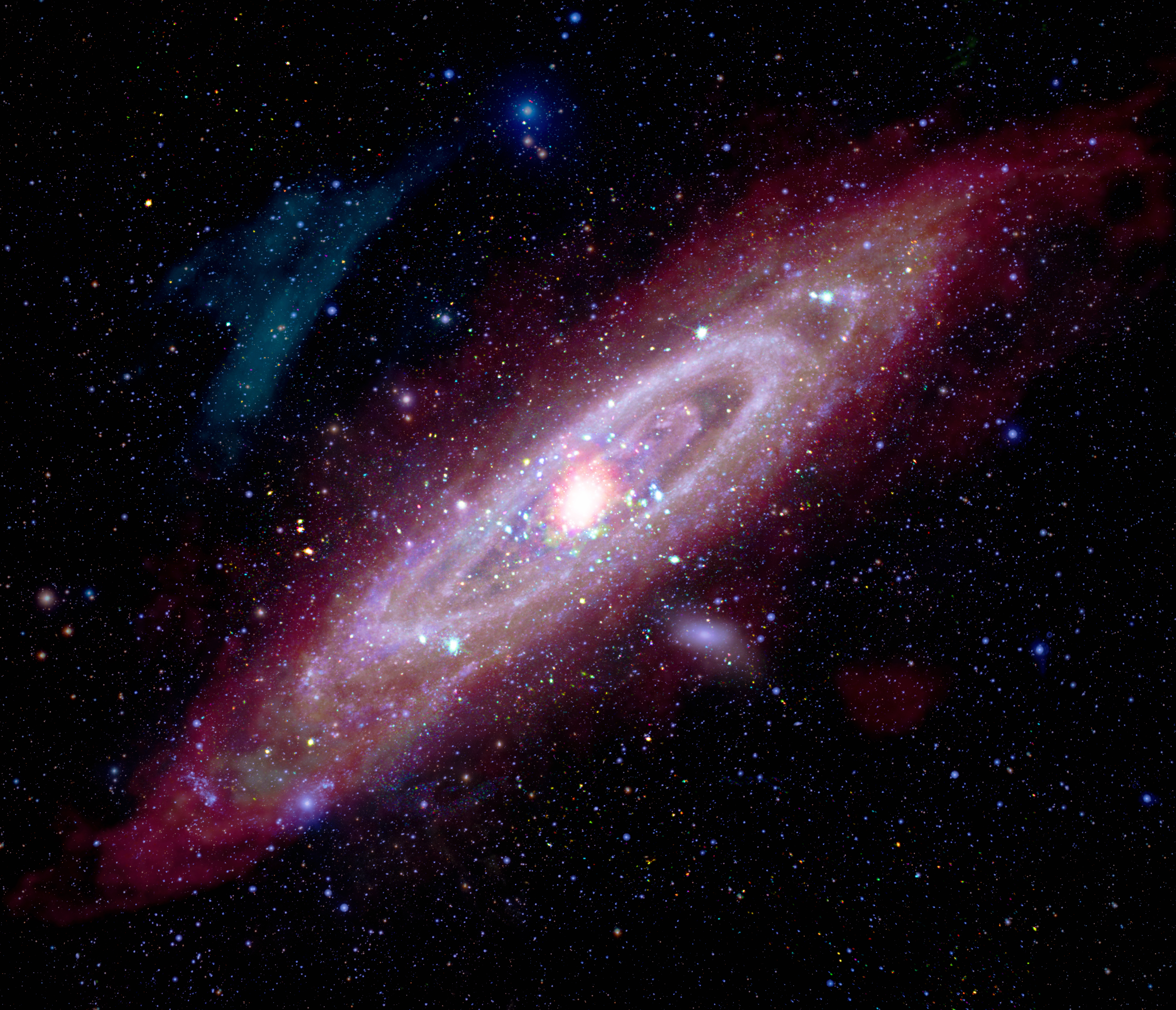Listen to the Andromeda galaxy's stars played as musical notes in eerie NASA video
NASA's Chandra Observatory has combined different wavelength images of the Andromeda galaxy to honor astronomer Vera Rubin, and then created a music video by converting the light in those images to musical notes.
The Andromeda galaxy's spiralling stars are played as musical notes in a new NASA observatory video, creating a cosmic crescendo that's out of this world.
The sonification video, released by NASA's Chandra X-ray Observatory, combines observations of the Andromeda galaxy collected by some of the world's most powerful telescopes, according to a NASA statement. Chandra also released a spectacular composite image of the galaxy, which is the closest spiral galaxy to our own Milky Way.
Researchers created the composite image by stacking photos taken in different light wavelengths, merging radio, infrared, optical, ultraviolet and X-ray data. The researchers then converted those images to sound by assigning a separate range of notes to each of these wavelengths. In the video, a line passes across the lights, playing each assigned note like keys on a piano.
"Musical notes ring out when the line encounters light," a representative for NASA wrote in the statement. "The lower the wavelength energy, the lower the pitches of the notes. The brighter the source, the louder the volume."
NASA described the composite image as a tribute to pioneering astronomer Vera Rubin, who studied Andromeda. The tribute comes days after a new observatory named after Rubin released its first images. The Vera C. Rubin Observatory features the world's largest digital camera and will spend the next decade creating a time-lapse movie of the universe.

Related: 6 incredible objects hidden in Vera C. Rubin Observatory's mind-boggling first image
Andromeda, or Messier 31 (M31), is located around 2.5 million light-years from the Milky Way. Studying the galaxy has led to many scientific discoveries. For example, Rubin and her colleagues' observations of Andromeda led them to conclude that there must be an unseen matter influencing how its spiral arms rotate, according to the statement. The research was pivotal in furthering scientists' understanding of dark matter, an enigmatic non-luminous substance that shapes the universe.
Get the world’s most fascinating discoveries delivered straight to your inbox.
Researchers created the new image and soundscape of Andromeda by combining different data collected over many years. For example, the X-ray image comes from data collected by Chandra and the European Space Agency's X-ray Multi-Mirror Mission (XMM-Newton). Researchers used this data to identify high-energy radiation around the supermassive black hole at the heart of Andromeda, according to the statement.
The images and sounds aren't just for fun. They are another way of examining Andromeda, and therefore a learning opportunity. Andromeda offers a view of a spiral galaxy that we can’t get from the Milky Way, given we're inside it, and so studying Andromeda furthers researchers' understanding of our own spiral galaxy, according to the statement.
"This collection helps astronomers understand the evolution of the Milky Way, our own spiral galaxy, and provides a fascinating insight into astronomical data gathering and presentation," the NASA representative wrote.

Patrick Pester is the trending news writer at Live Science. His work has appeared on other science websites, such as BBC Science Focus and Scientific American. Patrick retrained as a journalist after spending his early career working in zoos and wildlife conservation. He was awarded the Master's Excellence Scholarship to study at Cardiff University where he completed a master's degree in international journalism. He also has a second master's degree in biodiversity, evolution and conservation in action from Middlesex University London. When he isn't writing news, Patrick investigates the sale of human remains.
You must confirm your public display name before commenting
Please logout and then login again, you will then be prompted to enter your display name.
